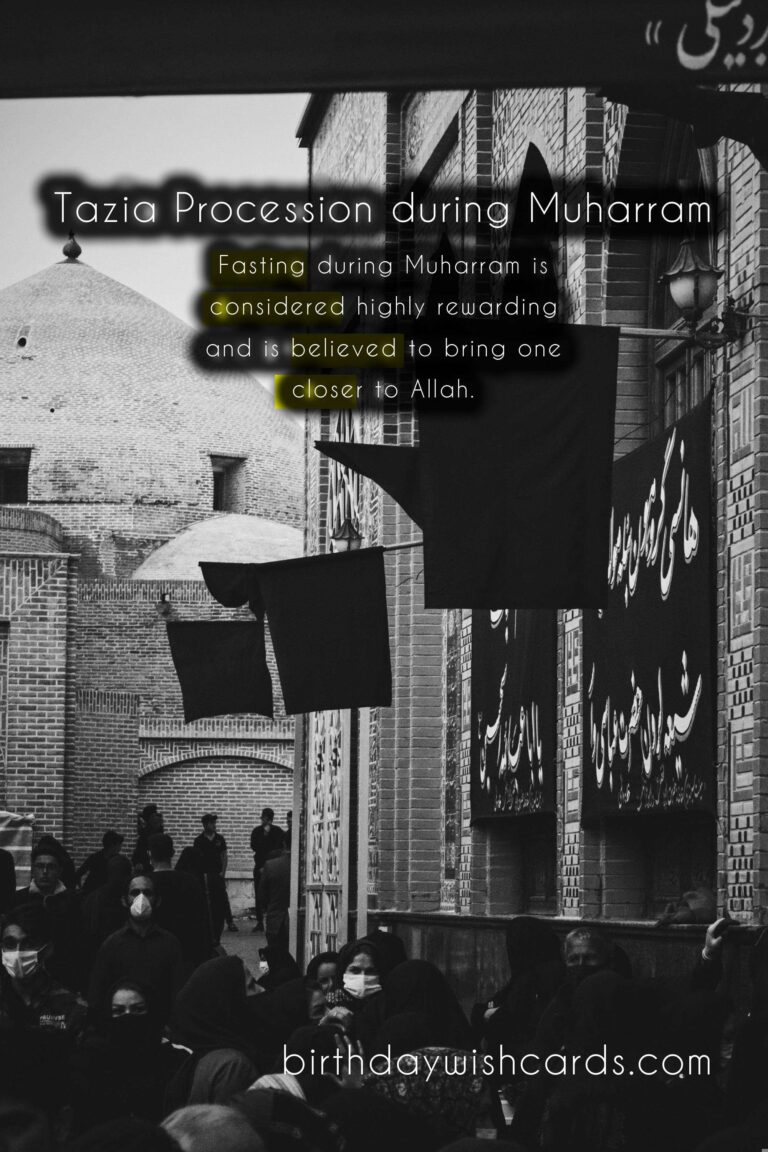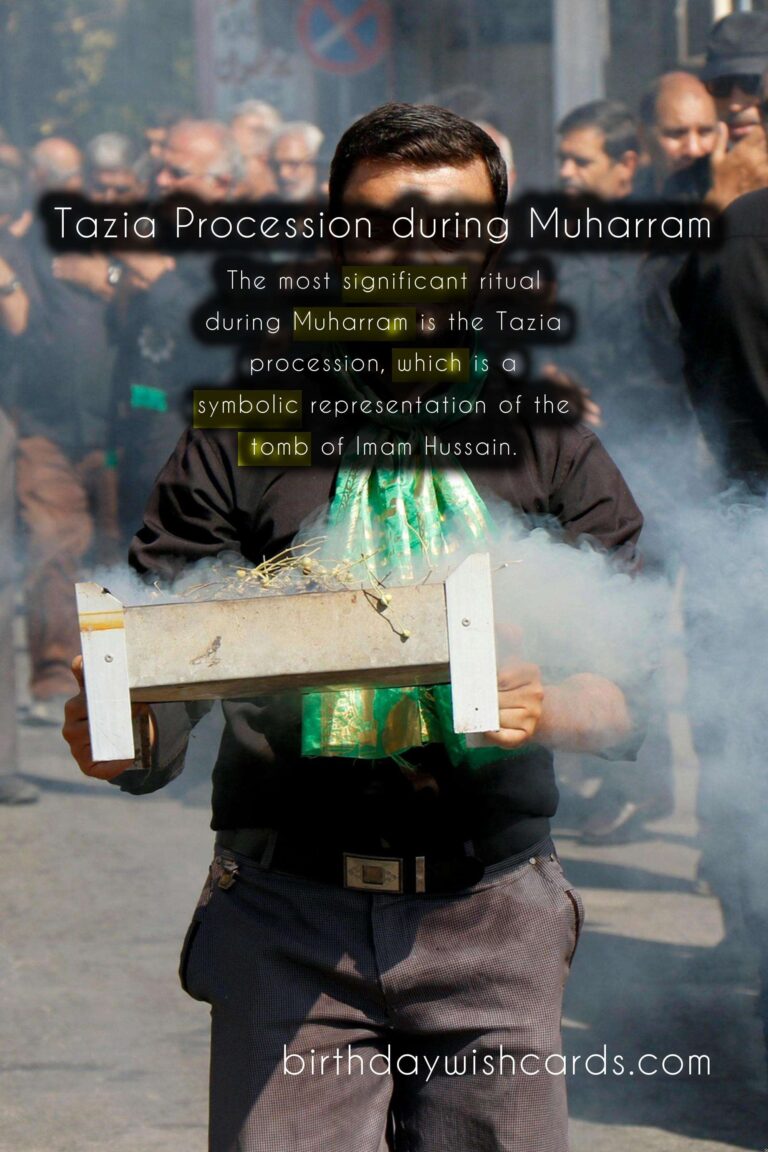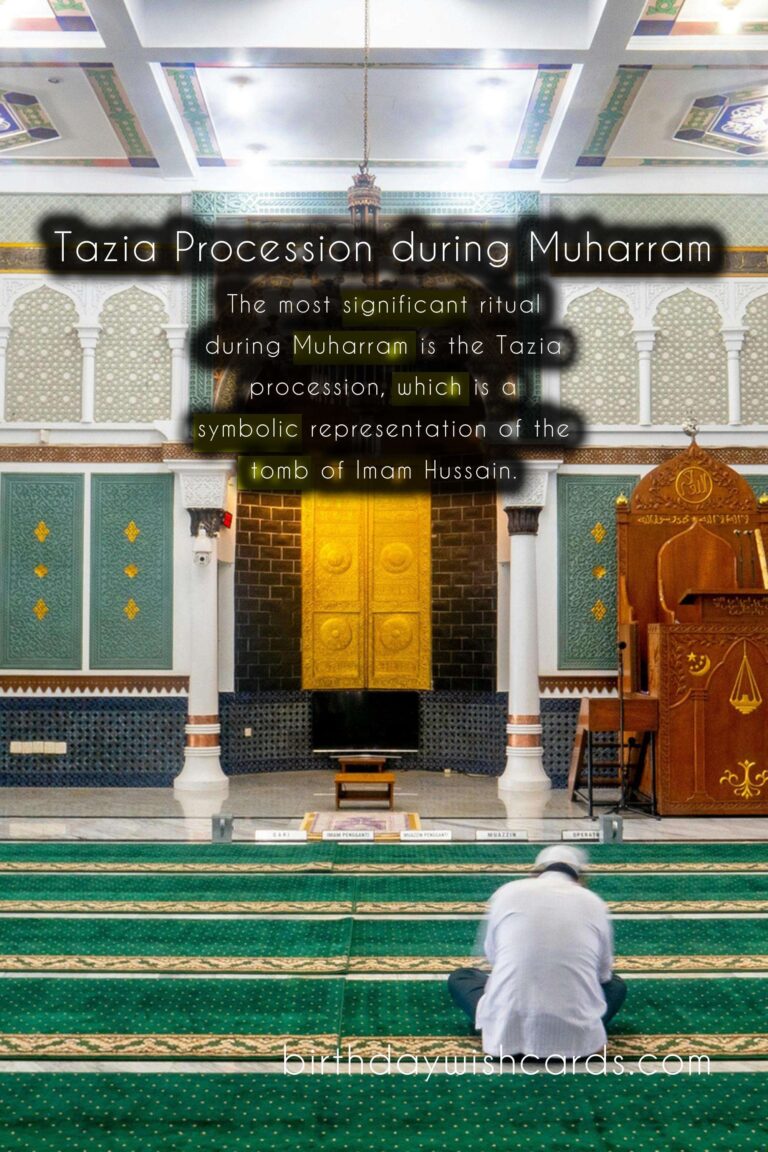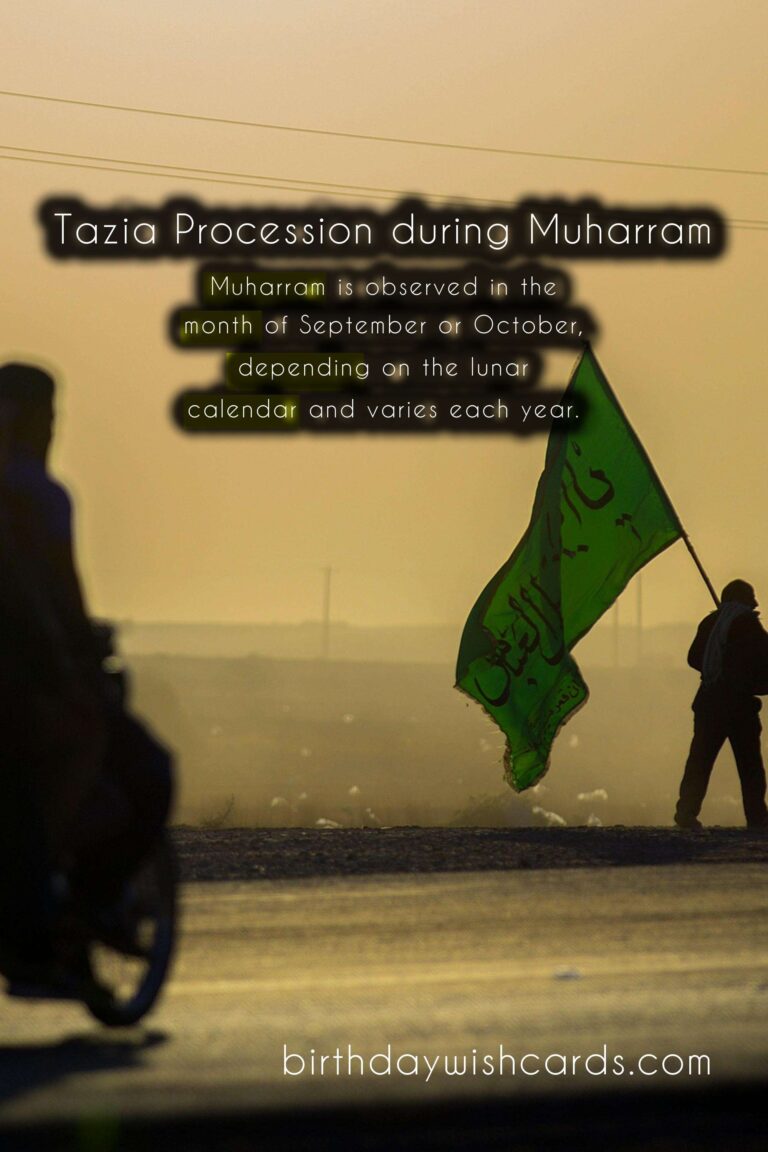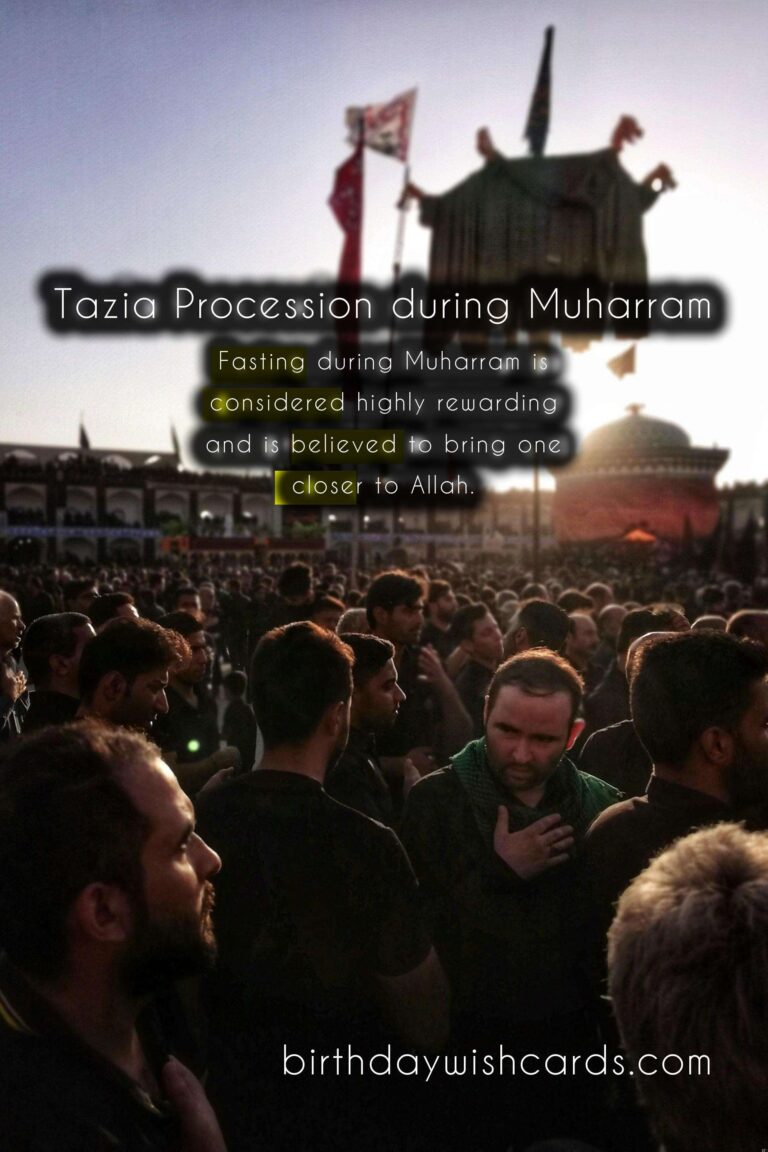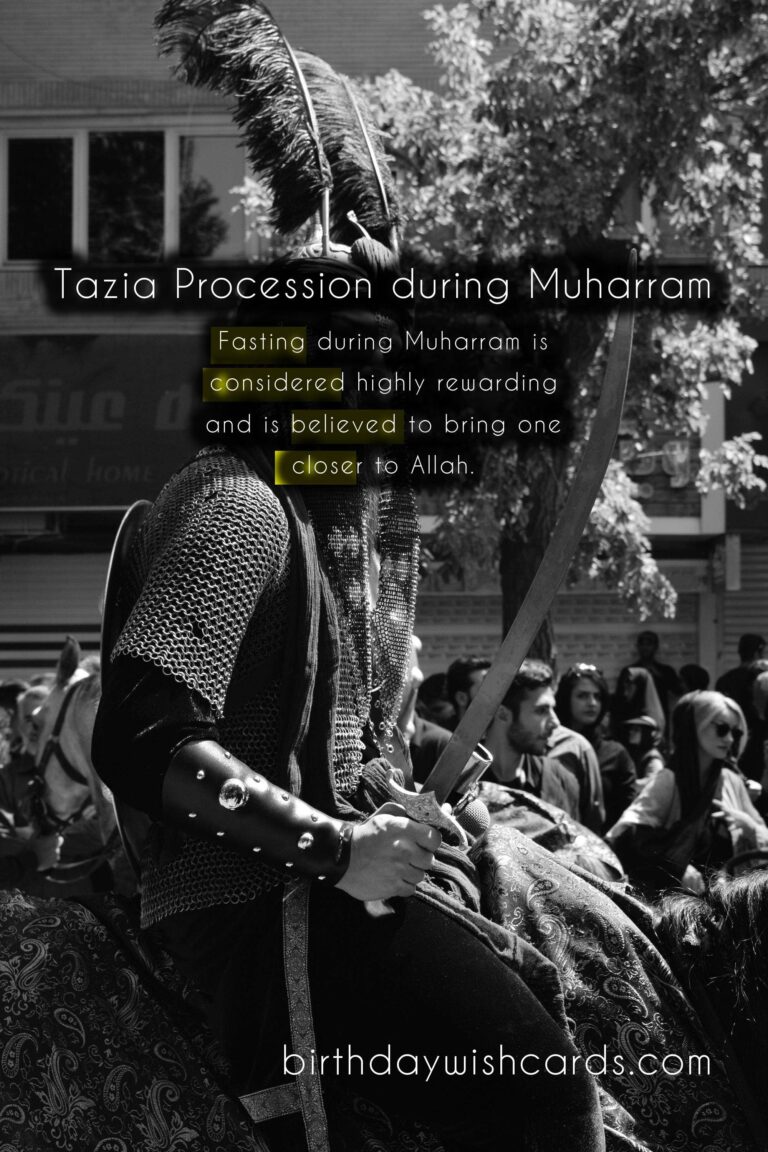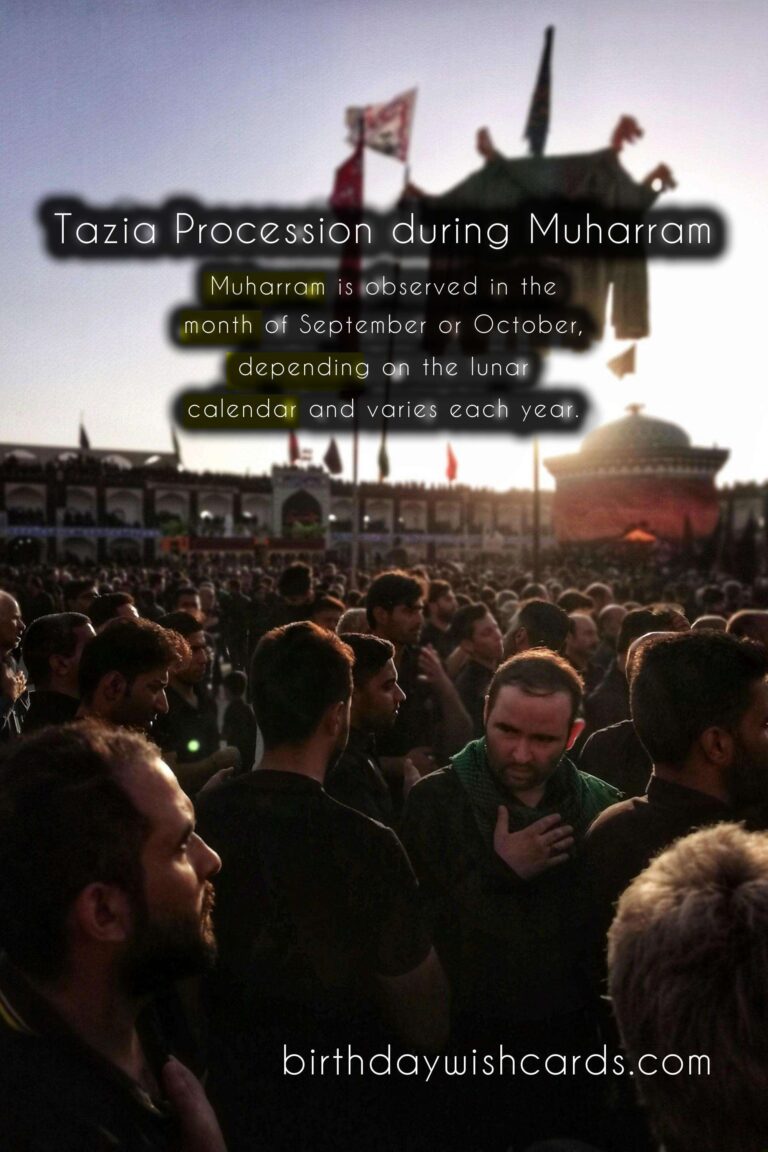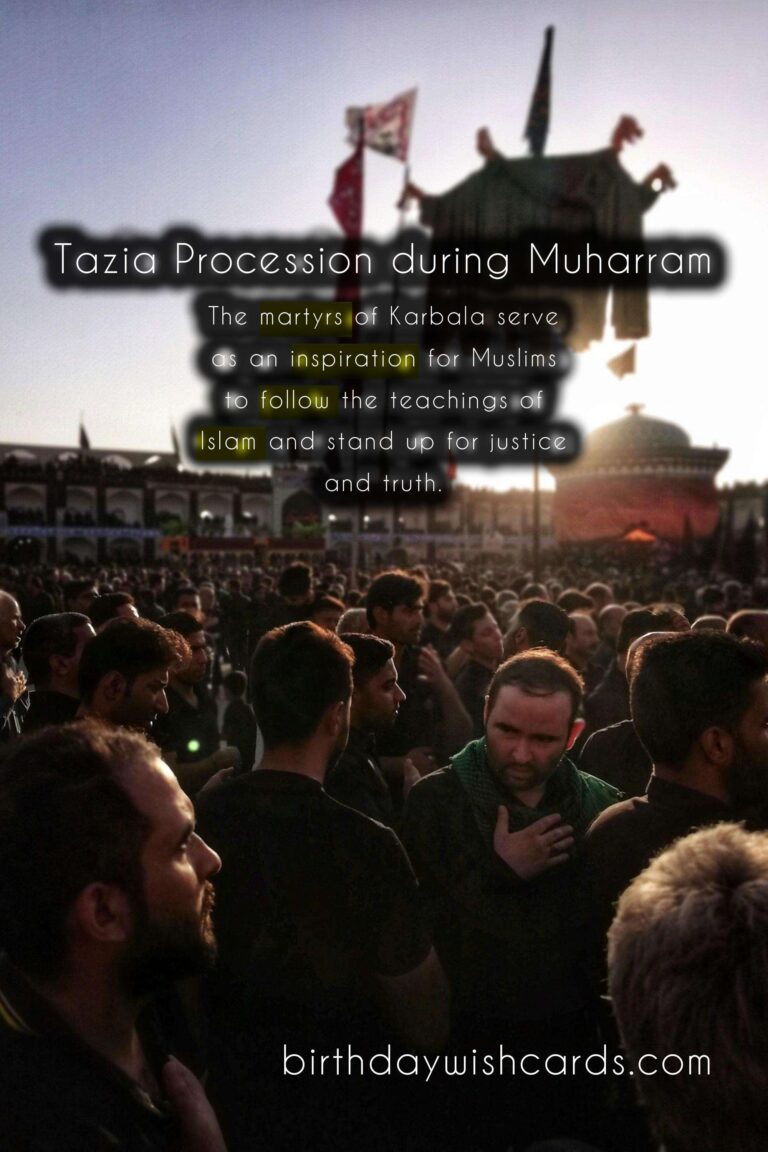 Muharram is the first month of the Islamic calendar, and regards as one of the most sacred and significant months for Muslims. It is an opportunity to reflect on the history and teachings of Islam, and to remember the sacrifices made by the Prophet Muhammad and his family. It is observed in the month of September or October, depending on the lunar calendar and varies each year. Muharram is a month of remembrance, mourning, and spirituality for Muslims all over the world. It marks the beginning of the new Islamic year and is considered a time for self-reflection and renewal. It is a month of observances and rituals, with the most significant one being the Day of Ashura (10th day of Muharram). This day is marked as a day of mourning for the martyrdom of Prophet Muhammad’s grandson, Imam Hussain, and his companions at the Battle of Karbala. It is believed that fasting during the month of Muharram is highly rewarding and brings one closer to Allah. Many Muslims also choose to observe voluntary fasts during this month to show their devotion and to seek forgiveness for their sins. Along with fasting, it is also common to donate to charity and perform acts of kindness during this month, as it is believed that deeds done during Muharram are multiplied in reward. The most significant and elaborate ritual during Muharram is the Tazia procession. Tazia is a replica of the tomb of Imam Hussain that is carried in a solemn procession through the streets. The mourners, dressed in black, pay their respects by beating their chests and reciting prayers. This ritual is a symbol of the sacrifices made by Imam Hussain and his companions and serves as a reminder of the struggle of good against evil. Muharram is also a time for Muslims to come together in their communities and participate in religious gatherings and lectures. These gatherings focus on the life and teachings of Prophet Muhammad and Imam Hussain, with the aim to educate and inspire others to follow the path of righteousness. As with many Islamic observances, Muharram is also marked with traditional foods and dishes. Some common dishes include Haleem, a paste of lentils and meat, and Sohan Halwa, a sweet made with wheat flour and nuts. Muharram serves as a reminder for Muslims to reflect on their lives and aims to inspire them to follow the teachings of Islam. It is a time of mourning, but also a time of hope and renewal. The martyrs of Karbala remain a symbol of bravery and sacrifice, and their story continues to inspire many to stand up for justice and truth. Muharram is observed in the month of September or October, depending on the lunar calendar and varies each year. The most significant ritual during Muharram is the Tazia procession, which is a symbolic representation of the tomb of Imam Hussain. Fasting during Muharram is considered highly rewarding and is believed to bring one closer to Allah. The Tazia procession is a reminder of the struggles of good against evil and serves as a symbol of sacrifice. Muharram also includes traditional foods and dishes, such as Haleem and Sohan Halwa. The martyrs of Karbala serve as an inspiration for Muslims to follow the teachings of Islam and stand up for justice and truth.
Muharram is the first month of the Islamic calendar, and regards as one of the most sacred and significant months for Muslims. It is an opportunity to reflect on the history and teachings of Islam, and to remember the sacrifices made by the Prophet Muhammad and his family. It is observed in the month of September or October, depending on the lunar calendar and varies each year. Muharram is a month of remembrance, mourning, and spirituality for Muslims all over the world. It marks the beginning of the new Islamic year and is considered a time for self-reflection and renewal. It is a month of observances and rituals, with the most significant one being the Day of Ashura (10th day of Muharram). This day is marked as a day of mourning for the martyrdom of Prophet Muhammad’s grandson, Imam Hussain, and his companions at the Battle of Karbala. It is believed that fasting during the month of Muharram is highly rewarding and brings one closer to Allah. Many Muslims also choose to observe voluntary fasts during this month to show their devotion and to seek forgiveness for their sins. Along with fasting, it is also common to donate to charity and perform acts of kindness during this month, as it is believed that deeds done during Muharram are multiplied in reward. The most significant and elaborate ritual during Muharram is the Tazia procession. Tazia is a replica of the tomb of Imam Hussain that is carried in a solemn procession through the streets. The mourners, dressed in black, pay their respects by beating their chests and reciting prayers. This ritual is a symbol of the sacrifices made by Imam Hussain and his companions and serves as a reminder of the struggle of good against evil. Muharram is also a time for Muslims to come together in their communities and participate in religious gatherings and lectures. These gatherings focus on the life and teachings of Prophet Muhammad and Imam Hussain, with the aim to educate and inspire others to follow the path of righteousness. As with many Islamic observances, Muharram is also marked with traditional foods and dishes. Some common dishes include Haleem, a paste of lentils and meat, and Sohan Halwa, a sweet made with wheat flour and nuts. Muharram serves as a reminder for Muslims to reflect on their lives and aims to inspire them to follow the teachings of Islam. It is a time of mourning, but also a time of hope and renewal. The martyrs of Karbala remain a symbol of bravery and sacrifice, and their story continues to inspire many to stand up for justice and truth. Muharram is observed in the month of September or October, depending on the lunar calendar and varies each year. The most significant ritual during Muharram is the Tazia procession, which is a symbolic representation of the tomb of Imam Hussain. Fasting during Muharram is considered highly rewarding and is believed to bring one closer to Allah. The Tazia procession is a reminder of the struggles of good against evil and serves as a symbol of sacrifice. Muharram also includes traditional foods and dishes, such as Haleem and Sohan Halwa. The martyrs of Karbala serve as an inspiration for Muslims to follow the teachings of Islam and stand up for justice and truth. 
